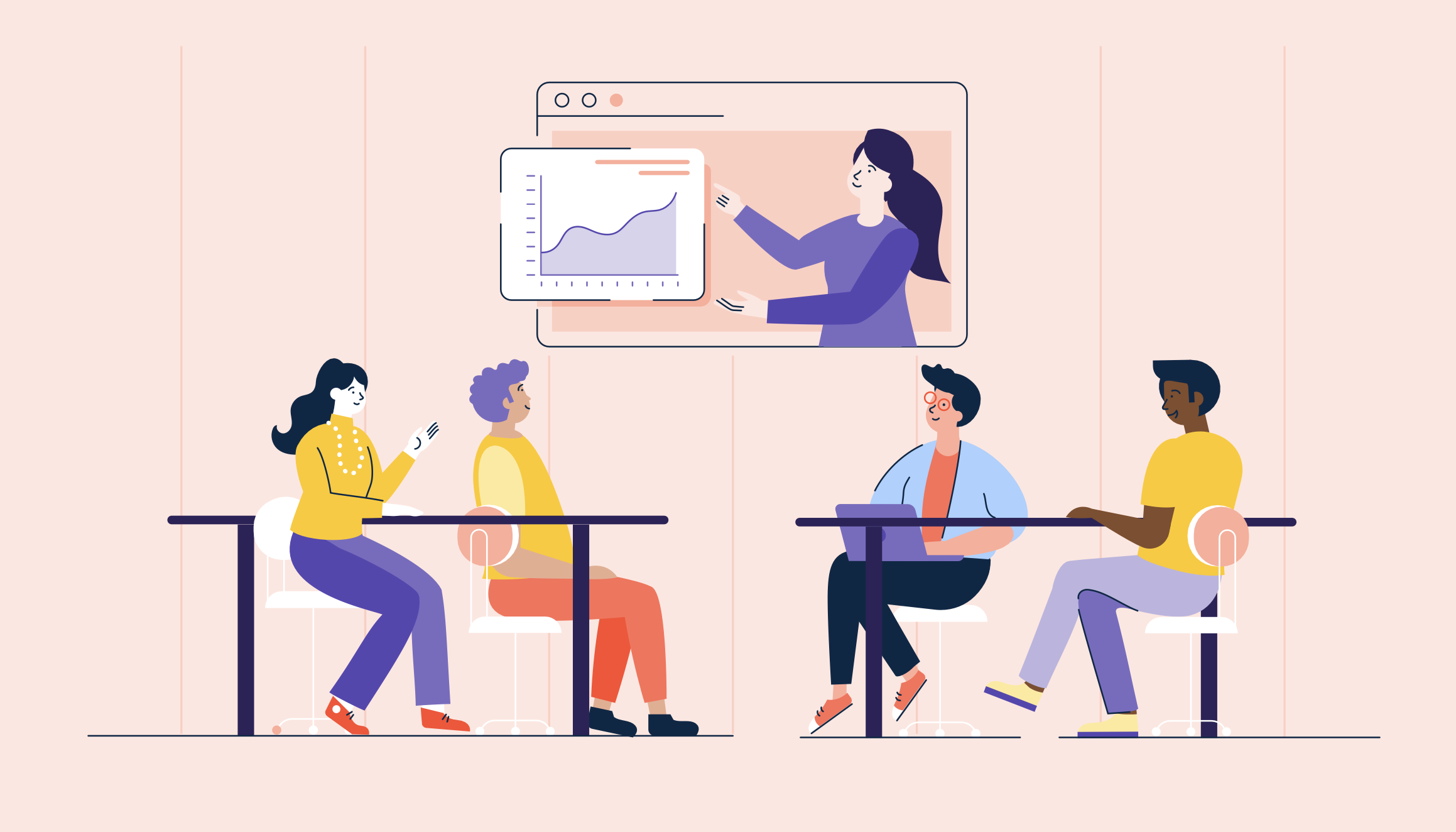February 21, 2023
 by Lauren Pope / February 21, 2023
by Lauren Pope / February 21, 2023

Employee training and development can be a long process, and often, employees still walk away feeling like they haven't learned everything they need to.
The transition from employee onboarding to doing the actual work can be jarring for employees who feel as though they've been undertrained. It can take weeks or even months for new employees to hit their stride and ramp to their full capabilities.
How can we, as HR professionals, avoid this common mistake and give our new employees what they need to be successful?
Some companies will use training and development services to employ a more hands-off approach, while some might want to dive right in and get their hands dirty.
The first step is to understand what training and development is and, more importantly, how we can encourage continued development after employees are onboarded. A strong talent management strategy is the key to improving your employee experience and empowering them to become the best they can be at their job.
Training and development is a formal human resources management strategy designed to increase employee performance, teach new skills, and develop an employee's existing skill set and knowledge.
A common mistake HR managers make is assuming that the training and development process is fine and that it's just the employee who is struggling. But the truth is that even your highest performing employee can benefit from a better training and development strategy. Remember, no matter how in-depth you think your training and development plan is, there’s always room to improve.
HR managers are at the forefront of the employee experience. Instead of getting defensive about your current training and development practices, take this opportunity to reflect on what you would change if you could.
What are some new initiatives you'd like to start to empower your employees' success? You would be surprised how many of these wild ideas can be achieved through a stronger training and development strategy.
So, what can you start doing today to help your employees get comfortable in their positions? We've got five tips to get you started.
When was the last time you took a good and honest review of your HR software strategy? If your answer is any longer than three years ago, you’ve already made your first mistake.
Technology is changing everything we know about HR management. From diversity and inclusion training to the hiring process, there’s no one part of talent management that software doesn’t touch – and your training and development strategy is no exception.
Employees are quitting their jobs at a record pace because they don’t feel they’ve been properly trained to do them. The talent market is skewed in favor of the employee, and employees feel emboldened to quit their jobs and find new opportunities. This highlights the importance of proper new hire onboarding.
If you’re relying on outdated training and development practices devoid of technology, you could be driving your employees right into the arms of a competitor. The time to double down on technology was yesterday.
Tip: Discover how to use video in the training and development of your new hires.
The first thing you should do is read more about how online learning platforms can transform your training and development strategy. By and large, employees actually prefer online training or training videos because it allows them to work at their own pace, better retain information, and review material more easily.
Another tip? Review your mandatory employee training sessions. We’ve all had a bad staff training session where lunch was served cold, and we couldn’t hear the speaker. Breathing new life into your employee training sessions will engage your employees.
Stuck on how you might do that? Don’t worry, we put together a list of employee training ideas you can steal. Remember, employees who are engaged are more likely to innovate at work, take on new projects, and teach their peers what they’ve learned.
Training and development is not a one-size-fits-all type of situation. If you're planning to hire people with a bunch of different strengths and weaknesses, they're going to have a bunch of different needs when it comes to getting started.
There are a lot of methods of training that are used to fulfill various needs. The most important need is ensuring that everyone is trained properly, in a way that makes sense to them.
These are the three main areas of understanding that you can use as a guide while you develop your training and development process:
You may not know right off the bat how someone prefers to learn. Therefore, it is imperative that you include several methods of training in your onboarding process, so everyone has an equal opportunity to learn.
Here are some examples of training methods to start doing so everyone can learn to the best of their ability:
Some employers are of the opinion that it isn’t their job to invest in employee education. They’re part of the old school of thought that employees show up for a paycheck, and that’s it. Employers with this mindset don’t see the benefit in investing extra resources in employee development.
The problem with that? Employers no longer have the upper hand when it comes to job hunting. The global job market is the tightest it has ever been, and employees are in the driver's seat.
This means training and promoting internally are more important than ever. Your employees are desperate for personal development and are willing to quit their job to get it. If you’re not willing to get ahead of that by offering career advancement options and external training, you might find yourself dealing with your best employees quitting.
Employers footing the bill for advanced degrees might sound crazy, but the truth is we may be at the beginning of a new HR benefits revolution. Would you rather be leading the pack or get left in the dust?
Let’s say you’re one of the employers looking to get ahead of the competition. Giving your employees the resources for continued education will help keep them engaged and give them the skills they need to be better at their job.
Here are two development programs you can implement this year to encourage training and development:
When used together, these two programs can create a culture of continued learning and pursuit of knowledge. It will make your employees better at their job and show them that you care about their personal development.
Training and development is something that doesn't always have obvious tells of whether it succeeded or not until it's too late.
Before your training and development process begins, make sure to sit with leadership and determine what your goals really are for training and development. Use the questions below to start the important conversations.
Once you have all your needs laid out, you can begin determining what needs to be looked at to consider your training and development process successful. Every company is different, so there isn't a clear list of metrics that you need to use. However, there are some base metrics that most companies will use to start seeing things more clearly.
Here are a couple of popular training and development metrics to get you started on tracking training and development success:
It’s very easy to get caught up in day-to-day work and push aside lofty goals and projects in favor of keeping the wheels turning. The problem is that your employees will eventually hit a point where they feel stagnant and bored in their current role and will crave something new.
If you don’t have an employee development plan in place and ready to use, then you suffer the consequences, like your best employee quitting.
Everyone, including your employees, has their own personal brand nowadays, and your job as an HR manager is to create constant growth opportunities for your employees at every stage of their career, whether it be their personal development or development within the company.
Thankfully, this is an easy mistake to avoid if you’re willing to put the work in. There are dozens of popular employee development programs your HR department can start planning for today.
Here are some ways you can continue employee training after the onboarding process:
These are just a few ideas you can steal to kick-start your employee development strategy. The best way to help develop your employees is to ask them about opportunities they would find interesting. When you give employees opportunities they ask for, they’re more likely to take advantage of them.
It's time to take a more proactive approach to employee training and development. Speak with your employees to understand how they can be best supported and then give them what they need. When you invest in your employees, you invest in your company as well.
Wondering how to attract top talent in the first place? Learn more about improving the overall employee experience to find (and keep) the best of the best.
This article was originally published in 2019. The content has been updated with new information.
Lauren Pope is a former content marketer at G2. You can find her work featured on CNBC, Yahoo! Finance, the G2 Learning Hub, and other sites. In her free time, Lauren enjoys watching true crime shows and singing karaoke. (she/her/hers)
Employee onboarding looks different depending on what stage of the employee experience you’re...
 by Lauren Pope
by Lauren Pope
Everyone has bad days at work – but how do you spot someone who keeps having them?
 by Lauren Pope
by Lauren Pope
Creating a company policy that gets employee buy-in is tricky.
 by Lauren Pope
by Lauren Pope
Employee onboarding looks different depending on what stage of the employee experience you’re...
 by Lauren Pope
by Lauren Pope
Everyone has bad days at work – but how do you spot someone who keeps having them?
 by Lauren Pope
by Lauren Pope


